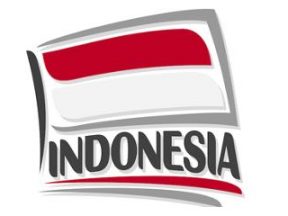Southeast Asia consists of Brunei, Cambodia, Indonesia, Laos, Malaysia, Myanmar, the Philippines, Singapore, Thailand, and Vietnam. Five of them are among the fastest growing ecommerce markets worldwide, comprising half of the top 10.
This article will focus on those five: Indonesia, Malaysia, the Philippines, Thailand, and Vietnam.
Until recently Southeast Asia was an ecommerce laggard and overshadowed digitally by China and Japan. Impediments included poor infrastructure, limited internet availability, and consumer skepticism. Most residents have no computer. But nearly all of them now have mobile devices and thus internet access. Mobile penetration rates for the five countries hover around 100%.
Covid-19 caused a shift in consumer behavior as stores closed in 2020 and 2021. According to a report from Google and Bain & Company, as many as 40 million people in Singapore, Malaysia, Indonesia, Philippines, Vietnam, and Thailand became new internet users in 2020. eMarketer projected the region’s 2022 ecommerce sales growth at 20.6%, the highest in the world, totaling $89.67 billion.
Country Statistics
Unless noted otherwise, the info below is from Statista’s ecommerceDB.
- Indonesia, with a population of 278 million, is the region’s largest market for online purchasing with sales of $43.4 billion in 2021 and year-over-year growth of 32%. The top Indonesian marketplaces in the country are Tokopedia (a local firm), Shopee, China-based JD, and Lazada. Indonesia has a 73.7% internet penetration rate. Electronics and furniture are the main product categories.
- Malaysia’s population is 32.8 million. 2021 ecommerce sales were $6.3 billion, 15% higher than 2020. Shopee is the most visited marketplace, followed by local platform PGMall, which partners with JD. Electronics and fashion are the top two purchase categories. The country has an 89.6% internet penetration rate.
- Thailand, with a population of 70 million, had ecommerce revenue of $10.5. billion in 2021 and year-over-year growth of 28%. JD, Shopee, and Lazada are the most popular marketplaces. Electronics and personal care are the main product categories. Thailand’s internet penetration is 77.8%.
- Vietnam has a population of 98.2 million and 2021 ecommerce revenue of $8 billion, 24% higher than in 2020. The top marketplaces are Shopee and two local providers: The Gioi Di Dong and Dien May Xanh. The country has 73.2% internet penetration.
- The Philippines, with a population of 112.7 million — second to Indonesia — has relatively low ecommerce engagement. 2021 revenue estimates vary from $5.5 billion (Global Data) to $12 billion (Statista). Shopee and Lazada are the two leading marketplaces. The Philippines has the lowest internet penetration at 68%.
Marketplaces
Lazada, owned by the Alibaba Group, has a presence in Indonesia, Malaysia, the Philippines, Singapore, Thailand, and Vietnam. Once the largest marketplace in the region in terms of customers, Lazada has been overtaken by Shopee.
Nonetheless, LazMall connects shoppers to over 32,000 leading international and local brands. It sells goods in electronics, automotive, fashion, health and beauty, and groceries. It reportedly has the strongest logistics network and fastest shipping in the region. LazMall generates roughly $1.5 billion in annual sales, making it the biggest ecommerce website in Southeast Asia by revenue. Lazada gets over 50 million visitors monthly and offers a custom fulfillment service.
Shopee, founded in Singapore, operates throughout Southeast Asia as well as Taiwan, Brazil, and a few other countries. It began as a consumer-to-consumer marketplace but has evolved into a business-to-consumer model while still offering C2C services. Facing high inflation, in June Shopee laid off staff in Indonesia, Thailand, and Vietnam. It shut down Mexico operations this month.
Shopee has logistics partnerships with local companies where it operates. Its payment system, ShopeePay, is an integrated mobile wallet. In March, Shopee partnered with 2C2P, a global payments platform. The partnership allows ShopeePay as a payment option for 2C2P’s extensive merchant network across the five markets in Southeast Asia.
Tokopedia was founded in 2009 in Indonesia as a C2C marketplace. Tokopedia has evolved to help small Indonesian street vendors sell their products across the country, which consists of 17,000 islands. The site now has 12 million merchants. Last month it introduced GoPayLater Cicil, a buy-now-pay-later service.
Tokopedia works with 13 logistics and fulfillment providers for same-day delivery. Merchants can store their products in Tokopedia warehouses located throughout Indonesia. The company’s advertising platform helps merchants promote their businesses and products.




